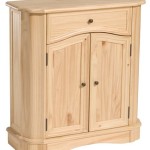Do You Have to Sand Cabinets Before Staining?
Staining cabinets is a great way to update their look and feel. However, before you can stain your cabinets, you need to properly prepare them. This includes sanding them down to create a smooth surface for the stain to adhere to.Why Sand Cabinets Before Staining?
There are a few reasons why you should sand cabinets before staining them: *To remove any existing finish.
If your cabinets have a previous finish, such as paint or varnish, you need to sand it off before you can apply a new stain. This will help the stain to penetrate the wood and create a more even finish. *To smooth out any rough spots.
Sanding will help to smooth out any rough spots or imperfections in the wood. This will create a more professional-looking finish. *To open up the pores of the wood.
Sanding will help to open up the pores of the wood, which will allow the stain to penetrate more easily. This will result in a more durable and long-lasting finish.What Grit Sandpaper Should You Use?
The grit of sandpaper you use will depend on the condition of your cabinets. If your cabinets are in good condition, you can use a fine-grit sandpaper, such as 120-grit or 150-grit. If your cabinets are in poor condition, you may need to use a coarser sandpaper, such as 80-grit or 100-grit.How to Sand Cabinets
1.Remove the doors and drawers from the cabinets.
This will make it easier to sand the cabinets. 2.Cover the floor and surrounding area with drop cloths.
This will help to protect them from dust and debris. 3.Wear a dust mask and safety glasses.
This will help to protect you from inhaling dust particles and flying debris. 4.Sand the cabinets in the direction of the grain.
Use long, even strokes. 5.Sand until the cabinets are smooth to the touch.
Be sure to sand all of the surfaces of the cabinets, including the edges and corners. 6.Vacuum the cabinets to remove any dust and debris.
Tips for Sanding Cabinets
*Use a sanding block.
A sanding block will help you to apply even pressure and create a more consistent finish. *Change the sandpaper frequently.
As the sandpaper becomes clogged with dust, it will become less effective. Change the sandpaper frequently to ensure that you are using a sharp, clean piece of sandpaper. *Be patient.
Sanding cabinets can be a time-consuming process. However, it is important to take your time and do a thorough job. The better you sand the cabinets, the better the finished product will look.Conclusion
Sanding cabinets before staining is an essential step in the process. By sanding the cabinets, you will remove any existing finish, smooth out any rough spots, and open up the pores of the wood. This will help the stain to penetrate more easily and create a more durable and long-lasting finish.
Staining Your Wood Cabinets Darker Young House Love

Staining Your Wood Cabinets Darker Young House Love

Prep And Paint Cabinets Without Sanding

How To Stain Oak Cabinetry Tutorial The Kim Six Fix

Gel Stain Kitchen Cabinets Without Sanding Fast Easy Diy

Yes Paint Over Stained Wood Without Sanding Porch Daydreamer

No Sand Method To Painting Kitchen Cabinets Porch Daydreamer

How To Paint Kitchen Cabinets Without Sanding Or Priming

Refinishing Kitchen Cabinets Modern Refacing Made Easy Wisewood

Diy Staining Oak Cabinets Eclectic Spark
Related Posts








